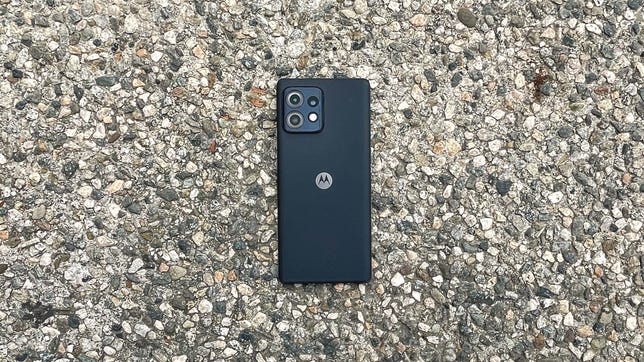Like
- Refined, premium-looking design
- Big battery and fast charging
- Great curved display and audio
Don’t like
- No expandable storage
- Photos taken are too vibrantly untrue-to-life
- Nothing distinguishes it apart from it competitors
The Motorola Edge Plus is the latest premium smartphone aimed at the US, and an all-around upgrade on last year’s Edge Plus. With its big battery and competitive price, Android fans have another top-tier contender to consider when phone shopping.
Motorola has refined its premium phones over the years, adding some features and taking others away in an effort to find the right combination that will appeal to top-tier phone buyers. The newest Edge Plus is the best combination so far. But it’s also not exactly the same phone sold around the world, since Motorola releases slightly different versions in different regions. For instance, the Edge Plus available in the US is virtually identical to the Edge 40 Pro in Europe and elsewhere, but has a larger battery and more modest recharging speed.
Advertiser Disclosure
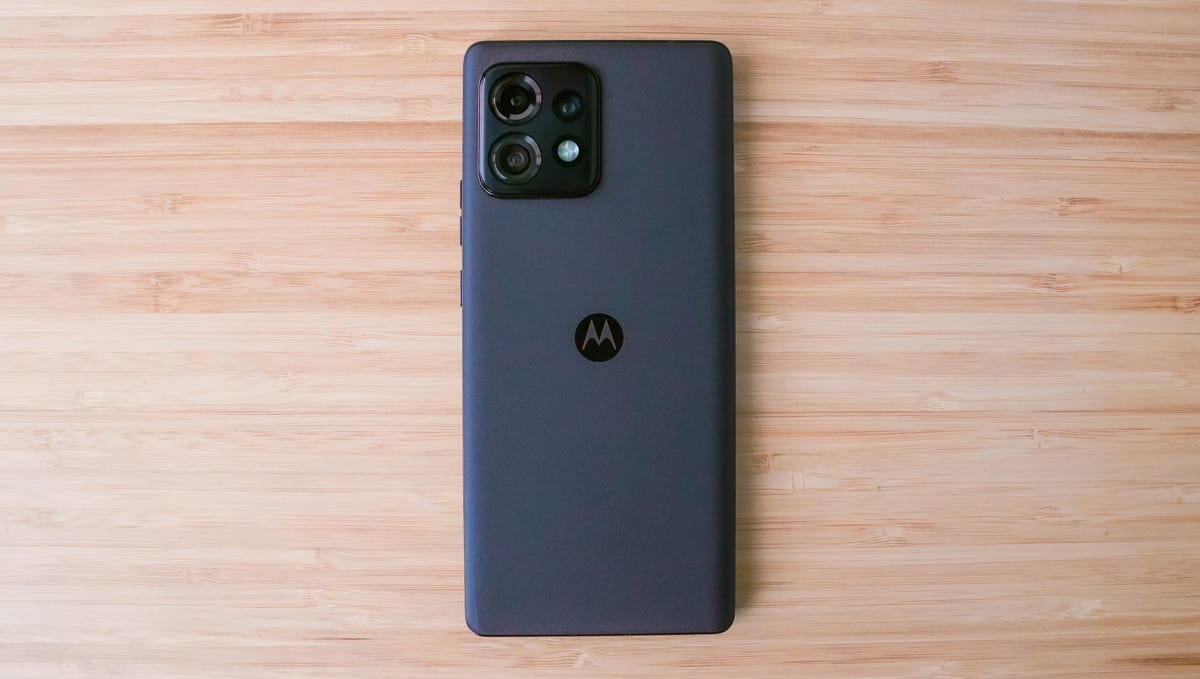
In previous years, it’s been tough to recommend the Edge Plus series over similarly priced (or even cheaper) Samsung rivals. But with its $800 price tag, which is $200 cheaper than its predecessor, the new Edge Plus is a decent alternative to the $800 Samsung Galaxy S23, and lands right in-between the $600 Google Pixel 7 and $900 Pixel 7 Pro.
That doesn’t mean that the Edge Plus is the absolute best value. It’s pricier than the $700 OnePlus 11, though its base model packs more onboard storage. And like other higher-end Android handsets, the Edge Plus faces stiff competition from the $500 Pixel 7A, which has most of its pricier Pixel sibling’s features.
The Motorola Edge Plus looks and feels premium with a sharp display featuring waterfall-style curved edges. That screen along with nearly top-of-the-line specs, like a big battery and truly fast charging speeds, make the Edge Plus a suitable option for anyone who doesn’t need the Galaxy S23’s zoom photo capabilities or the Pixel 7’s AI-powered photo editing. But aside from its tremendous battery life, there isn’t much else that distinguishes the Edge Plus from other premium phones.
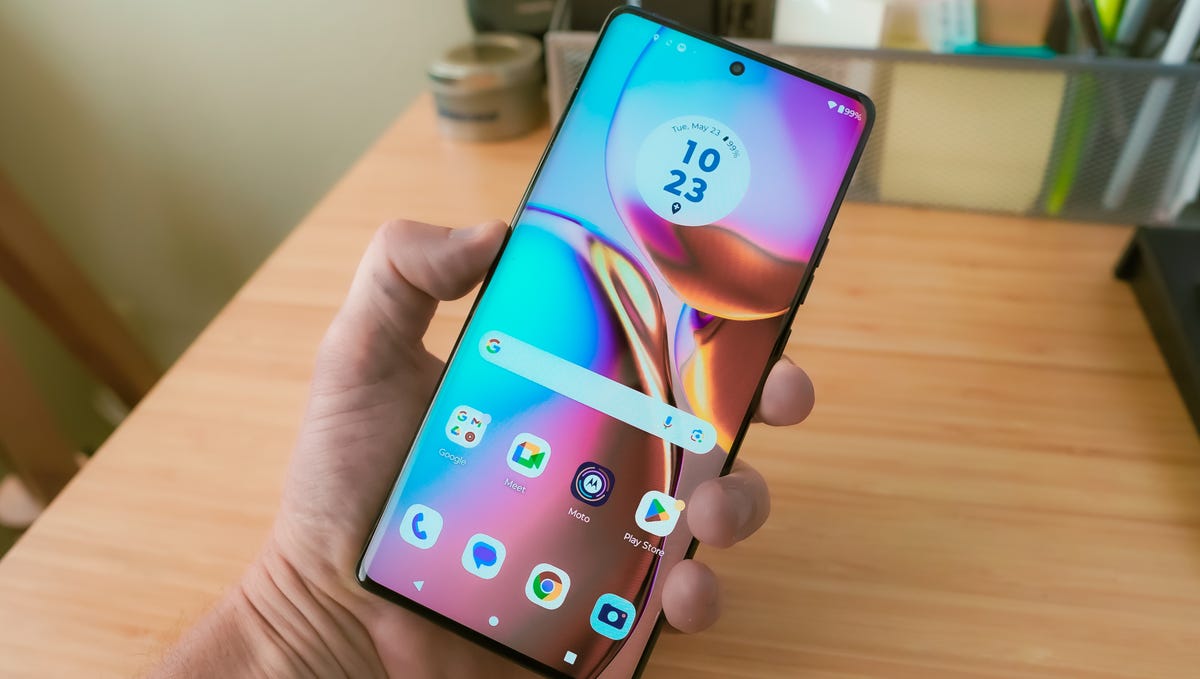
The Edge Plus’ display curves over the side of the phone.
Good battery life, great recharge speeds
The new Motorola Edge Plus has a 5,100-mAh battery, which is 300 mAh more than its predecessor. In practice, the phone easily survived media-heavy everyday activities. When I put the Edge Plus through CNET’s intensive-use media test — which includes streaming movies, playing games, scrolling social media, and joining video calls for a total of 45 minutes — the battery dropped 8%.
That’s comparable to the battery drain on the Galaxy S23 and Pixel 7A in the same test, and a little worse than the Galaxy S23 Plus and Galaxy S23 Ultra. Based on my early testing, the Edge Plus simply lasts longer than many other phones, especially when watching videos and playing games. The battery made it through a full day of use and then some, though it likely won’t be able to last two full days without a recharge.
The Edge Plus’s fast charging outperforms some of its peers. It may not have the ridiculously fast 125-watt charging of the European Edge 40 Pro, but the 68-watt charger included in the box is more than enough. When my test unit was down to 3% battery, a 30-minute recharge juiced it back up to 80%. Compare that to the 25-watt max charging on the standard Galaxy S23 or 45-watt charging on the S23 Plus and Ultra, and the Edge Plus has, well, the edge.
The Edge Plus’ charging doesn’t beat some phones with high-wattage chargers, like the OnePlus 11 with a 100-watt charger that juiced up a phone from zero to fully charged in 26 minutes. In addition to 68-watt wired charging, the Edge Plus has 15-watt wireless charging and can charge other devices at 5 watts.
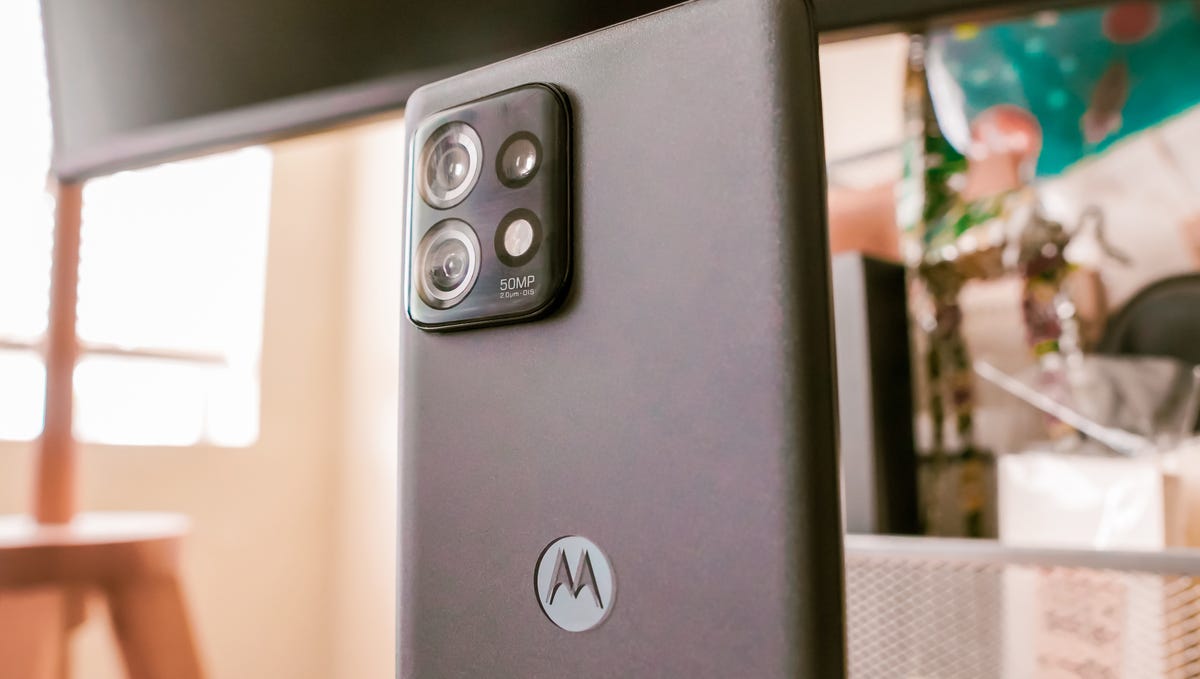
The Edge Plus has a matte-finish metal back.
The best-looking Motorola phone yet (come at me, Razr fans)
Motorola’s premium phones have been on a journey since the brand released the Edge Plus debuted in 2020. The original had an attractive device, and its display edges curved down to abruptly meet the phone’s rear metal plate with such a severe edge that I still remember it biting into my hand as I gripped its sides. The next Edge Plus in 2022 did away with the waterfall-style edges in favor of a standard flat screen, which was less painful but also less stylish.
The latest Edge Plus is a return to form with carefully curved display edges that smoothly meet the polished metal frame. The back is a matte metal with a slight texture, like fine-grain sandpaper, that gives it a refined look and contrasts against the glossy Motorola logo. The smoky glass-covered square camera block is a serious upgrade over the somewhat cheap-looking camera oval on last year’s model. Overall, it’s a phone that would look professional being held up to your ear, if we ever raised our phones like that anymore.
The Edge Plus’s 6.7-inch, 2,400×1,080-pixel OLED display has sharp and clear visuals and supports HDR10 Plus. It has a 165Hz refresh rate, which is technically faster than the last Edge Plus’s 144Hz refresh rate screen. While I could barely tell the difference between the phone’s maximum 165Hz refresh rate and the 120Hz step down setting, the higher refresh rate did look slightly smoother when scrolling through the operating system animations or browsing the web. It also has an under-display fingerprint sensor for security, as well as facial recognition to unlock your phone with your mug.
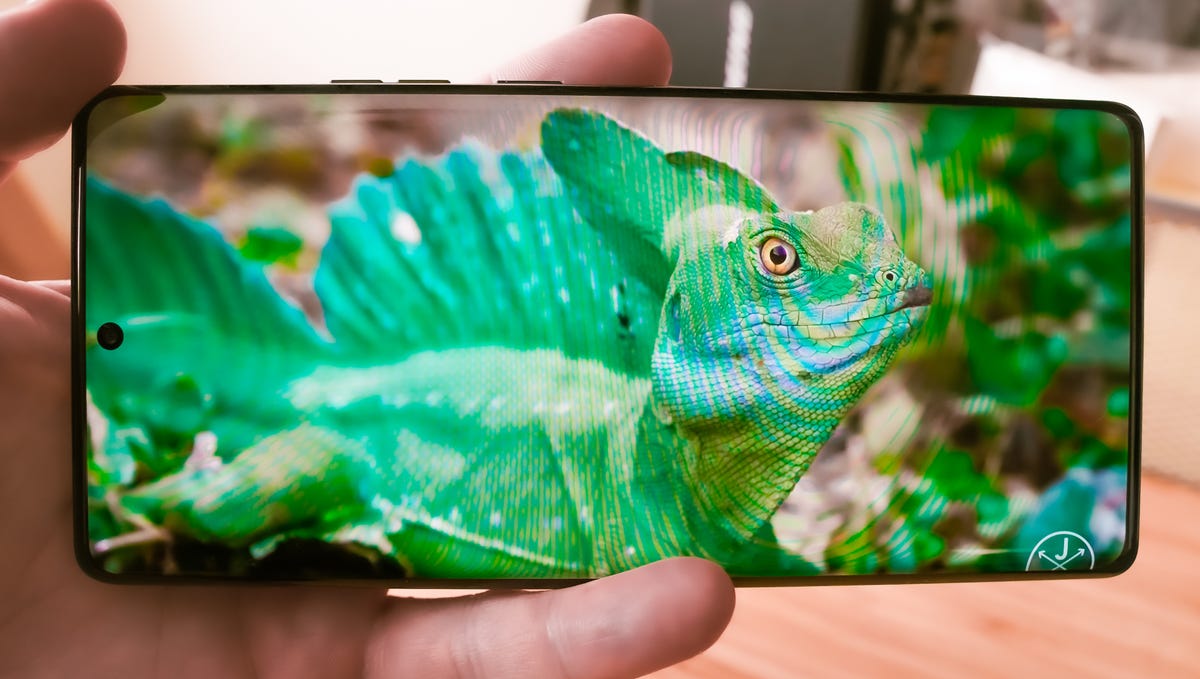
The display has a hole-punch cutout for the selfie camera.
Specs keep up with the competition
The Edge Plus packs a Snapdragon 8 Gen 2 chipset, the top-tier premium silicon from Qualcomm, 8GB of LPDDR5 RAM and either 256GB or 512GB of storage, though it lacks the option for expandable storage via microSD card. This is a bit of a step down from last year’s model, which came in both 8GB and 12GB of RAM configurations, but I didn’t feel the new Edge Plus was let down without the additional memory.
Overall the Edge Plus performs well. I didn’t experience any slowdown or delays transitioning between apps or doing light tasks. The phone kept up with more process-intensive tasks like gaming and fiddling with video, like switching between horizontal and vertical video orientations.
For raw stats, the Edge Plus kept up with its rivals scoring similar benchmark test results to its premium handsets peers. Take a look at Geekbench 5 results below.
Geekbench V.5.0 single-core
Geekbench V.5.0 multicore
The Edge Plus runs Android 13 with a mostly stock version of the operating system and will get three years of Android updates and four years of twice-monthly security updates, which is encouraging for folks who want to keep their phones for longer. Though with Android 14 expected to launch in October, Motorola’s phone won’t be on a par with other leading Android phones for that long. Samsung still leads the pack with a guaranteed five years of major Android updates and security updates.
The Edge Plus also retains Motorola’s small suite of beloved gesture control shortcuts like the chop-chop to turn on the flashlight and the double-twist to open the camera app.
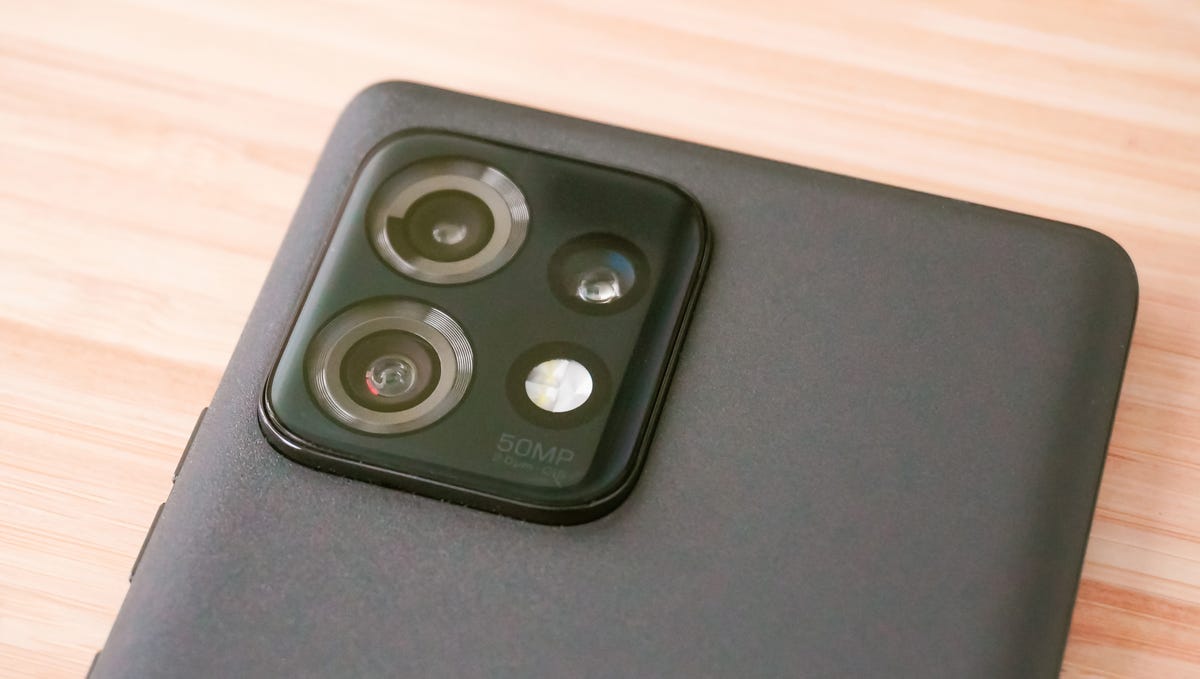
The Edge Plus has triple rear cameras.
Cameras are good, but not the best
The Edge Plus has a triple rear camera consisting of a 50-megapixel, f1.8 main shooter, a 50-megapixel ultrawide and a 12-megapixel, 2x optical zoom camera that extends to 16x digital zoom. Given last year’s Edge Plus lacked a telephoto lens, this alone makes the new model superior to its predecessor.

Edge Plus main camera
Photos taken with Motorola phones have never reached parity with those shot and processed on premium Apple and Samsung phones, and while that’s still the case, Motorola is catching up. In side-by-side comparisons of the same photos taken on an iPhone 12 Pro and Samsung Galaxy S22 Ultra, the Edge Plus’s photos have slightly more saturated colors but lack detail in shadows.

Edge Plus main camera (portrait)
This leads colors to streak into uniform hues rather than dappled with subtle differences from angled light, moisture or some other factor. It’s not too noticeable unless you look closely.
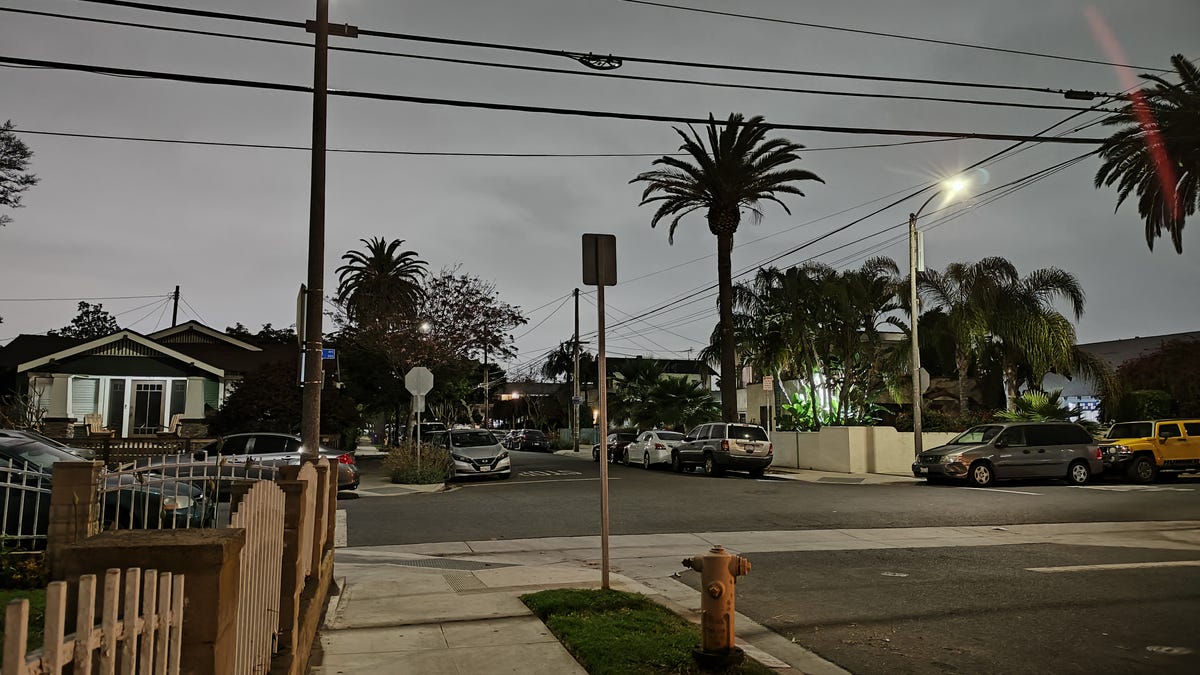
Edge Plus main camera

Edge Plus main camera

Edge Plus telephoto camera (2x zoom)

Edge Plus telephoto camera (16x digital zoom)
The Edge Plus’ 2x telephoto works well and compares favorably with an iPhone, though the premium Galaxy phones still take far clearer photos out to a distance. The ultrawide camera has a narrower field of view, capturing less area than either Galaxy or iPhone.

Edge Plus main camera (portrait)
The Edge Plus’s cameras take capable portrait photos, and while the saturation is a bit much for normal photos, it actually pops nicely against the added depth. At night, photos capture a good amount of light, preserving detail of subjects if losing out on some shadow and texture.
Photos from the 60-megapixel, f/2.2 front-facing shooter have an impressive amount of detail and color, though come out a bit more vibrant than they should. The phone can record 4K video in 60fps with the main and ultrawide cameras.
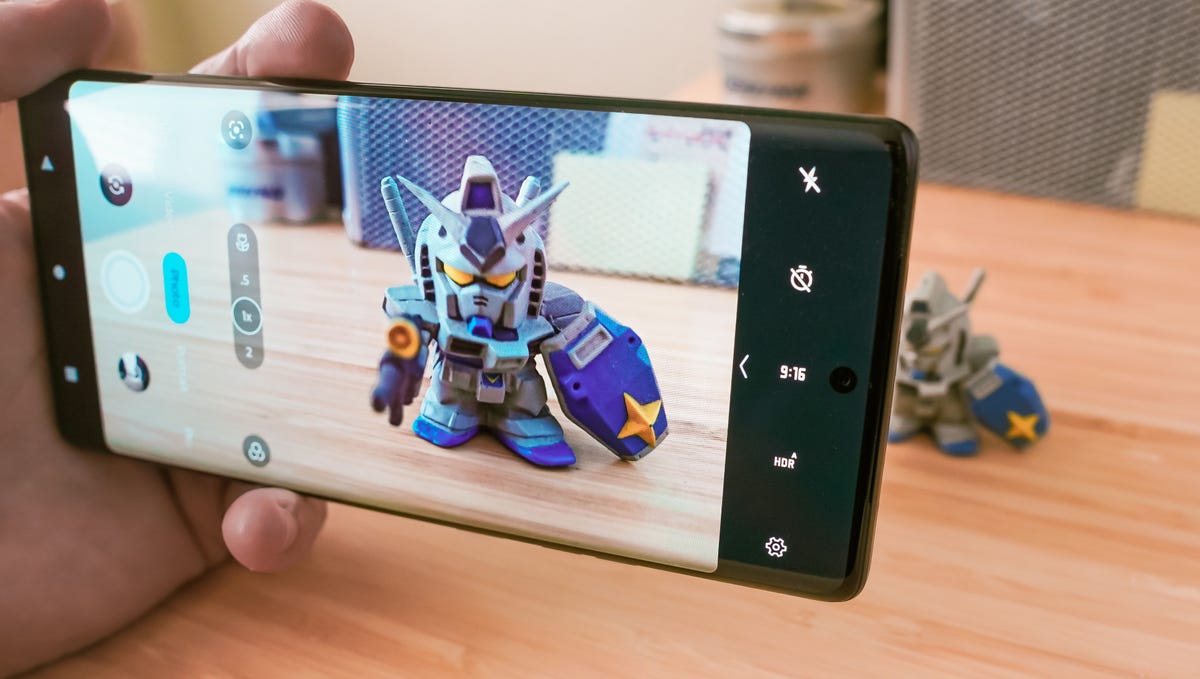
The Edge Plus’ camera app.
Should you buy a Motorola Edge Plus?
Motorola made the right tweaks with the Edge Plus, with a snazzier design and slight upgrades everywhere else to make it better than its predecessor. While its cameras and software still don’t produce photos that truly top those coming out of Samsung or Apple phones, they get close, producing good shots in dark and light settings.
But it’s the Edge Plus’s $800 price that makes it a true competitor to the Galaxy S23 and other premium phones. So long as you don’t need extensive zoom photo capabilities or Google’s line of photo software tricks. The new Edge Plus’s large battery and fast charging should make it a consideration among top-end Android devices.
How we test phones
Every phone tested by CNET’s reviews team was actually used in the real world. We test a phone’s features, play games and take photos. We examine the display to see if it’s bright, sharp and vibrant. We analyze the design and build to see how it is to hold and whether it has an IP-rating for water resistance. We push the processor’s performance to the extremes using both standardized benchmark tools like GeekBench and 3DMark, along with our own anecdotal observations navigating the interface, recording high-resolution videos and playing graphically intense games at high refresh rates.
All the cameras are tested in a variety of conditions from bright sunlight to dark indoor scenes. We try out special features like night mode and portrait mode and compare our findings against similarly priced competing phones. We also check out the battery life by using it daily as well as running a series of battery drain tests.
We take into account additional features like support for 5G, satellite connectivity, fingerprint and face sensors, stylus support, fast charging speeds, foldable displays among others that can be useful. And we balance all of this against the price to give you the verdict on whether that phone, whatever price it is, actually represents good value.
Motorola Edge Plus (2023) specs
| Display size, type, resolution | 6.7-inch, OLED, 2,400×1,080 pixels |
|---|---|
| Pixel density | 394 ppi |
| Dimensions (millimeters) | 161.2 x 74 x 8.59 mm |
| Weight (ounces, grams) | 203 g; 7.2 oz (converted) |
| Mobile software | Android 13 |
| Camera | 50-megapixel main, 50-megapixel ultrawide, 12-megapixel 2x telephoto |
| Front-facing camera | 60-megapixel |
| Video capture | 8K UHD (30fps) |
| Processor | Snapdragon 8 Gen 2 |
| RAM, storage | 8GB RAM; 256 or 512GB storage |
| Expandable storage | None |
| Battery, charger | 5,100 mAh, 68W charging |
| Fingerprint sensor | Yes |
| Connector | USB-C |
| Headphone jack | N/A |
| Special features | 165Hz, 68W charger included in box |
| Price off-contract (USD) | $800 |
| Price (GBP) | Converts to 649 |
| Price (AUD) | Converts to AU$1,225 |

